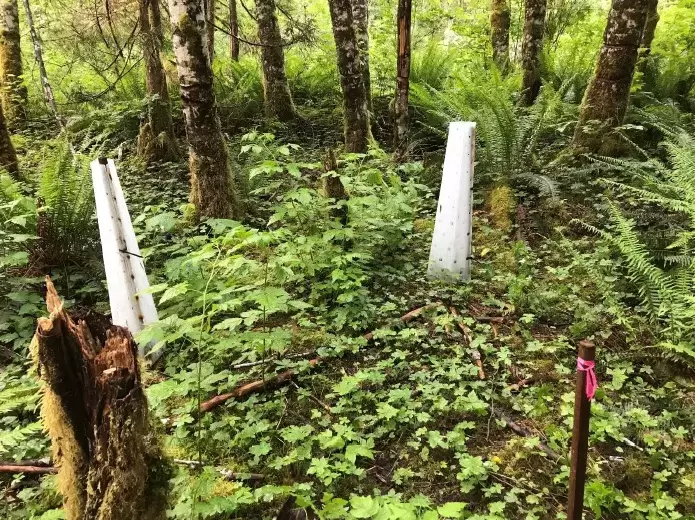The Nootka Sound Watershed Society (NSWS) is nearing completion of its three-year riparian restoration project for watersheds located within traditional Nuu-chah-nulth territories.
After being awarded a project worth $904,010 from the Fisheries and Oceans Canada Coastal Restoration Fund, the NSWS has coordinated the planning, implementation and monitoring of silviculture treatments on the Sucwoa, Tahsis and Leiner-Perry Rivers near Tahsis (Mowachaht/Muchalaht First Nation), the Little Zeballos River near Zeballos and Chum Creek near Oclucje (Nuchatlaht First Nation, and Ehattesaht First Nation).
The purpose of this project is to contribute to the restoration of salmon populations by creating habitat and environmental features that are critical for the fish. This was done using a variety of forestry practices to improve bank stability and salmon habitat.
Dave Miller, Ehattesaht/Chinehkint fisheries manager, said a project like this is important for wild salmon stocks to have a healthy and clean pathway up the river, which will promote cleaner and more sustainable food and resources for the community.
“Habitat restoration in the Little Zeballos has been a concern of ours since the impacts of old logging practices and commercial fishing activities came into our territory,” Miller said. “We now want to have a better understanding of the impacts on our wild stocks and improve habitat restoration activities. The fish feed our forests, this is very important. A circle of life event… our elders have spoken to this time and time again, it’s now happening, we are taking action.”
More than 135 hectares of riparian area received silviculture treatments. These treatments were aimed at accelerating natural forest processes by planting and promoting coniferous tree species (western red cedar and Sitka spruce) which create a long-term root network that helps to stabilize stream banks and provide future large woody debris input into streams. They also help to create old growth attributes, supporting diverse ecosystems that contribute to healthy forests and streams. In all, more than 21,000 trees were planted throughout the three years of the project.
The NSWS hired strategic natural resource consultants to oversee the project with direction from their governing board and Western Forest Products. Two silviculture contractors were involved in the project including Nootka Reforestation Ltd and Adanac, who hired local forestry crews from Tahsis, Gold River, Tsaxana, Zeballos and Campbell River.
According to a NSWS press release, historical logging practices did not regulate the harvesting of streamside vegetation; however, current-day forestry legislation requires riparian zones on all fish-bearing streams to be protected and left in their natural state.
These protection measures help to maintain and support critical habitat that supports populations of Pacific Salmon, steelhead and trout.
Managing forests stands along streams in this manner will ensure the long-term contribution of large wood to streams, reduce sediment released into streams and contribute needed organic components and insects to the river adding building blocks of stream food webs.
Miller said that historically, the Little Zeballos River held more than 400,000 chinook at one time pre-1940.
“I was told by my grandfather, late Sam Adams, this did not include chum, sockeye or coho numbers, so you could imagine a river like Little Zeballos and what it could produce before cannery’s and commercial activities came into our territories,” Miller said. “It’s important to us, fishing is a way of life. It’s in our blood.”


